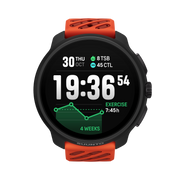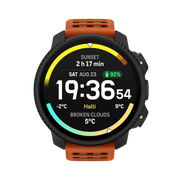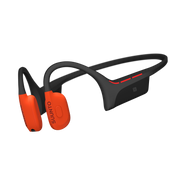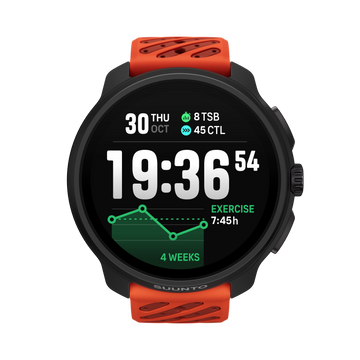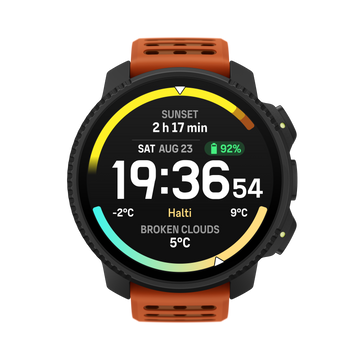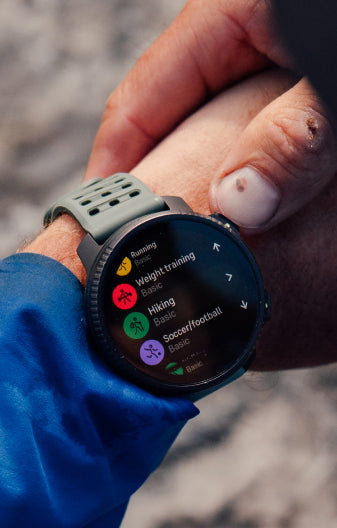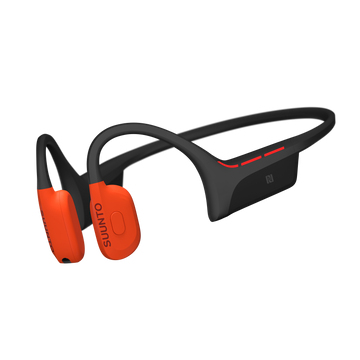

Suunto Blog
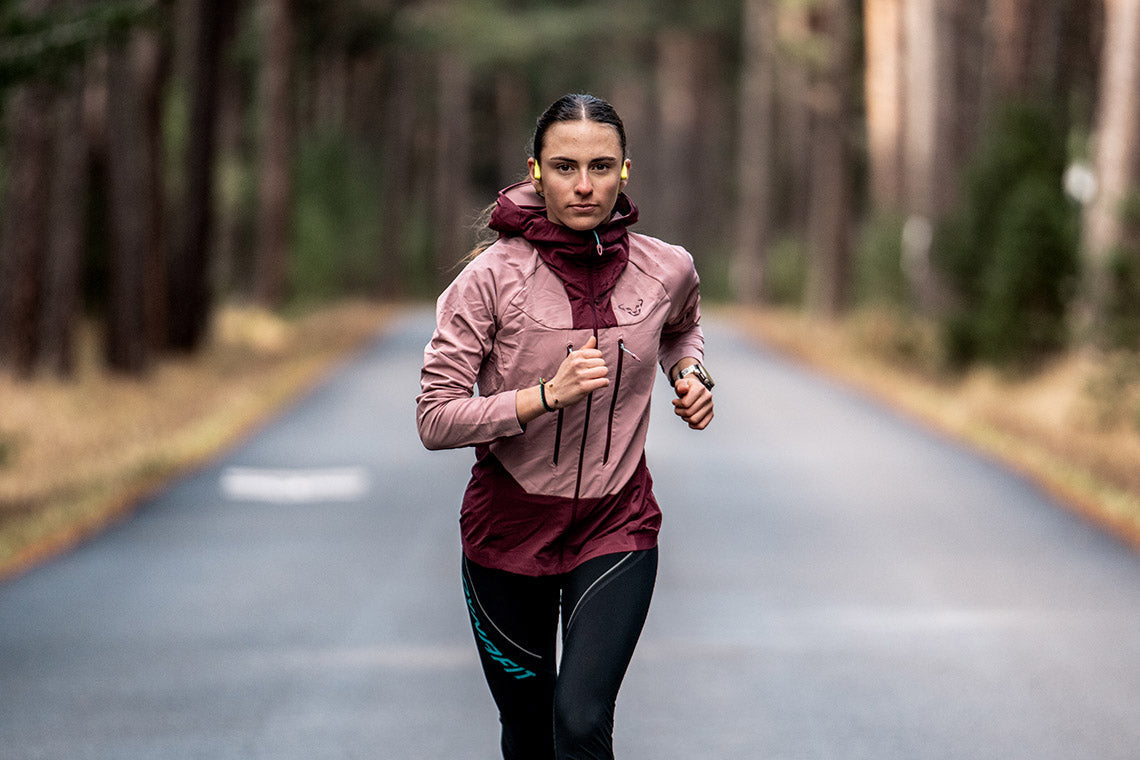
Community-powered training tunes
We asked the Suunto community for your favorite training music. Here’s what you listen to as two Spotify playlists!
In the pursuit of peak performance, the right playlist can be just as essential as the perfect pair of sneakers or a well-balanced meal. Understanding the profound impact music has on our workouts, we turned to the Suunto community for their ultimate training anthems.
The result? Two electrifying compilations curated directly from their recommendations: one pulsating with fast, energetic rhythms to fuel the most intense workouts, and the other, a collection of smooth, easy-listening melodies crafted to accompany moments of serene focus and recovery.
Dive into the beats that inspire, motivate, and elevate our training sessions below!
Fast-paced training music by Suunto Community
We asked you delivered: These power songs get the Suunto community through the tough workouts.
Easy-paced training music by Suunto Community
We asked you delivered: These chill songs get the Suunto community's workouts to flow smoothly.

Italy dominates the Vertical Week 2024
Suunto World Vertical Week, the thrilling celebration of the uphill challenge, united outdoor enthusiasts from around the globe in a collective pursuit of elevation gain on March 18–24. All human-powered activities by the participants were counted and every hill was turned into an opportunity to conquer new heights.
We have now analyzed the data to see which country and activity type climbed the most!
The usual suspects were on top of the country rankings
In the country rankings, the usual suspects – countries in the mountainous regions of Europe – were once again on top. This time Italy dethroned Austria for the number one spot with over 400 meters of ascent per activity on average. Switzerland also broke its way to the top three.
The only non-European nation in the top 10 was South Africa in ninth place. Greece made it to the top 10 for the first time.
Average ascent meters by country
When looking at the total ascent, meaning adding up the ascent in all the activities in a nation for the Vertical Week, France took the top spot from Spain and Italy climbed past Austria on the third spot.
Top 10 for total ascent meters
France
Spain
Italy
Austria
Germany
Switzerland
USA
Poland
United Kingdom
Czech Republic
Skiers – and the Japanese trail runners – were above the rest
In the activity type rankings, there weren’t any major changes: ski touring activities had the biggest average ascent, followed by mountaineering and trail running. The average ascent for all the ski touring activities came close to the magical 1000-meter mark but was still a bit below the summit. Maybe next time!
Average ascent meters by activity type
While the skiers had the biggest days on average, when looking at individual activities with over 1000 meters of ascent, trail runners were in the lead. In 2023 the order was the other way round.
In the individual performances, four people really stood out: They all had tracked over 20.000 meters of human-powered ascent during the Vertical Week. Impressive!
And while looking at the big picture, many people seemed to push it more than last year: For a top 10% placing, you needed to climb 2275 meters during this year’s Vertical Week. That’s almost 373 meters more than in 2023.
The same change is visible in the top of the top: To make it to the top 3% of the Vertical Week participants, you needed to climb 4062 meters, 472 meters more than in 2023.
The country rankings winner Italy is very strong also in different activity type rankings. They earned a podium spot in six out of ten different categories!
Ski touring
Slovakia 1160m
Switzerland 1062m
Poland 1051m(Average for all countries 953 m)
Whoop whoop, we have a new winner in the ski touring category! The Slovakian skiers ascended more than any other nation in any of the categories. It’s also clear that the 1000-meter mark is a clear goal for skiers, and the entire top 3 broke that limit.
Trail running
Japan 1076m
Italy 674m
Greece 600m(Average for all countries 457 m)
This is amazing: The Japanese trail runners were the only ones breaking the 1000-meter mark in any other category than ski touring. They kept their well-deserved top spot in trail running for another year. Congratulations!
Mountaineering
Italy 865m
Finland 838m
France 799m(Average for all countries 633 m)
Italy continued their dominancy, but the second place was a surprise: How did such a flat country as Finland make its way to second place?
Mountain biking
South Africa 645m
Italy 547m
Slovenia 540m(Average for all countries 393 m)
The South Africans were active on the bike, climbed more than any other nation and ensured that also the African continent was presented in the rankings.
Gravel cycling
United Kingdom 656m
United States 440m
Italy 421m(Average for all countries 298 m)
Gravel cycling was a new addition on the list this time. And, not surprisingly, the ascent meters for gravel cycling fell somewhere between mountain biking and cycling. The UK took the top spot in the activity ranking clearly.
Cycling
Spain 435m
Italy 335m
Slovenia 286m(Average for all countries 210 m)
Everyone knows that cycling in Spain in the spring is great. And they seem to know it themselves, too!
Trekking
Japan 850m
Switzerland 575m
Austria 541m(Average for all countries 351 m)
The Japanese took the top spot in two categories, trekking and trail running. Two category wins was only matched by Italy (number one in mountaineering and hiking).
Hiking
Italy 438m
Slovakia 386m
Slovenia 351m(Average for all countries 240 m)
Yet another category with a strong Italian performance. Forza!
Nordic skiing
Switzerland 363m
Austria 324m
Norway 305m(Average for all countries 216 m)
While the top three countries in the cross country skiing category were expected, what was surprising was the change in the podium lineup from the previous year: None of these three were on the podium last year.
Running
Czech Republic 152m
Switzerland 138m
South Africa 130m(Average for all countries 95 m)
Running, the most popular Suunto activity in general, is not focused on the vert. Despite the smaller numbers, there still is a winner: Czech Republic took the number one spot!

Celebrate the uphills during the 10th annual Suunto World Vertical Week!
Some people choose the path with the least resistance. We choose to celebrate the uphills. Join us for the 10th annual Suunto World Vertical Week on March 18–24!
Welcome to Suunto World Vertical Week – a thrilling celebration of the uphill challenge! From March 18 to March 24, outdoor enthusiasts from around the globe will unite in a collective pursuit of elevation gain, turning every hill into an opportunity to conquer new heights. The beauty of Suunto Vertical Week lies in its accessibility, taking place everywhere, and embracing all human-powered activities.
Whether you're a trail runner, skier, hiker, mountaineer, cyclist, or any other adventurer, the Vertical Week invites you to climb as much as you can. The ultimate goal? To determine which nation and activity type emerges victorious, boasting the most elevation gain.
Joining the Vertical Week is simple – just open the Suunto app and click 'join' in the Vertical Week message. All your human-powered activities during the week count.
Join now and elevate your adventure!
Follow your progress in real-time
The Vertical Week sport app shows the current activity ascent (top), total ascent (bottom) and your total compared to Vertical Week participants in 2023.
You can follow your total ascent for the Vertical Week with the new SuuntoPlus Vertical Week sport app: The Vertical Week sport app will count every meter you climb and show your cumulative ascent for both the current activity and the entire week. You can also see how high you would be ranked in the previous Vertical Week challenge. Are you already in the top 30% or perhaps even the top 5% of participants?
Go to the SuuntoPlus Store in Suunto app and sync the Vertical Week sport app to your watch. Before starting your first activity of the Vertical Week, select the sport app in the activity settings.
Learn more about SuuntoPlus sport apps.
Join our community events in Innsbruck and Girona
If you are spending your Vertical Week in or around Innsbruck, Austria, or Girona, Spain, you should check out our community events: In Innsbruck we will be running with BASEFIVE on March 18 and skiing on March 20 and 23. In Girona we will go on a community run together with the Overland crew on Saturday, March 23.
Learn more about Suunto x OVERLAND Vertical Week events in Girona and join!
Data from previous years
Check out which sports and nations have captured the podium places during the past years. Will this year bring changes to the top places? Now is your chance to affect on this year's results by collecting as many vertical meters as possible.
2023 - 2022 - Summer 2021 - Winter 2021 - 2020 - 2019 - 2018 - 2017 - 2016
Read more
How to use the terrain maps in your Suunto Vertical
10 Suunto features for vertical gain
Suunto World Vertical Week 2023 Big Data
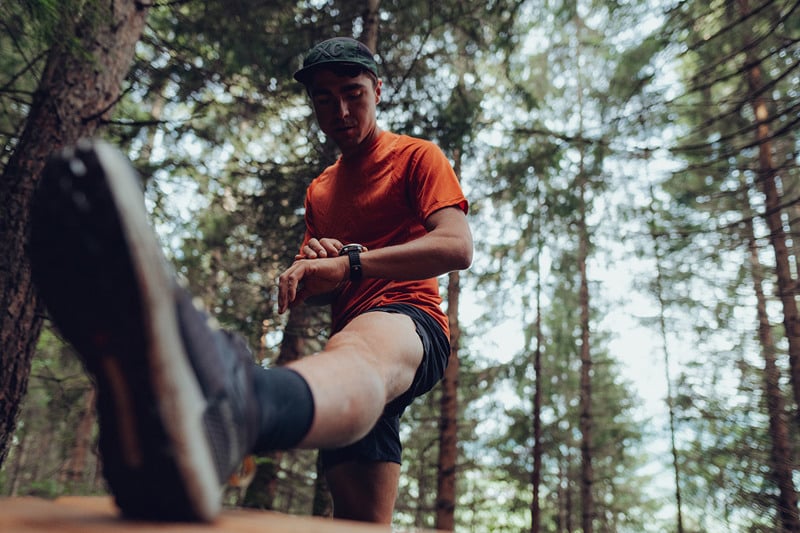
Improve your running technique with Suunto and Stryd
Do you want to optimize your running performance and technique? If yes, pair your Suunto running watch with a Stryd sensor to measure running power and other key metrics, such as leg spring stiffness, vertical oscillation, ground contact time, and impact loading rate.
With the new SuuntoPlus Stryd sports app, you can follow these values live while running and get real-time feedback and guidance. You can also access your data for after analysis in Stryd PowerCenter, a platform that helps you plan, analyze, and improve your running.
With the Suunto watch and the Stryd sensor, you can take your running to the next level!
Follow four key running metrics
With your Suunto and the Stryd sensor, you can learn how to balance your leg spring stiffness and vertical oscillation, reduce your ground contact time, and impact loading rate to run faster, smoother, and safer.
Leg spring stiffness
Leg spring stiffness is a measure of how well you use the elastic energy in your legs to propel yourself forward. It is related to your running power and efficiency.
Vertical oscillation
Vertical oscillation is a measure of how much you bounce up and down with each stride. It is related to your running form and energy waste.
Ground contact time
Ground contact time is a measure of how long your foot stays in contact with the ground on each step. It is related to your running speed and intensity.
Impact loading rate
Impact loading rate is a measure of how quickly you apply force to the ground when you land. It is related to your injury risk and recovery.
Pairing a Stryd sensor with a Suunto can help you monitor and optimize these four metrics by providing real-time feedback and personalized insights.
These drills will improve your running
Different types of drills can help you enhance your running metrics – and your running.
Leg spring stiffness: This is a measure of how well you use the elastic energy in your legs to propel yourself forward. To improve your leg spring stiffness, you can do plyometric exercises, such as skipping, bounding, or hopping. These exercises help you develop explosive strength and elasticity in your leg muscles and tendons.
Vertical oscillation: This is a measure of how much you bounce up and down with each stride. To reduce your vertical oscillation, you can do drills that focus on your posture, alignment, and cadence, such as running with high knees, butt kicks, or quick feet. These drills help you minimize your vertical movement and improve your running form and efficiency.
Ground contact time: This is a measure of how long your foot stays in contact with the ground on each step. To lower your ground contact time, you can do exercises that strengthen your muscles and tendons.
Stryd is a wearable device that clips onto your shoe, and communicates with your Suunto watch.
How to use Stryd with Suunto
Go to the SuuntoPlus Store in the Suunto app on your phone and install SuuntoPlus Stryd sport app on your watch.
Before starting an activity, go down to exercise options and select the Stryd sport app under SuuntoPlus menu.
Once you select the sports app in the watch, it connects to Stryd sensor. If the connection is for the wrong sensor, just reselect the app.
Start your activity. The Stryd data will be presented as an extra screen (swipe left or push the middle button to view it).
During your run, the Stryd sport app will show you live data from the Stryd sensor.
After you have completed your activity, your running data will be available in both your Suunto and Stryd apps so you can start your analysis.
The Stryd sensor and SuuntoPlus Stryd sport app are compatible with Suunto Race, Suunto Vertical, Suunto 9 Peak Pro, Suunto 9 Peak, Suunto 9 Baro, Suunto 9, Suunto 5 Peak, Suunto 5 and Suunto 3 watches.
If you already own a Suunto watch but do not yet have Stryd, you can order one here: the Stryd store
Read more: 8 essential running form drills
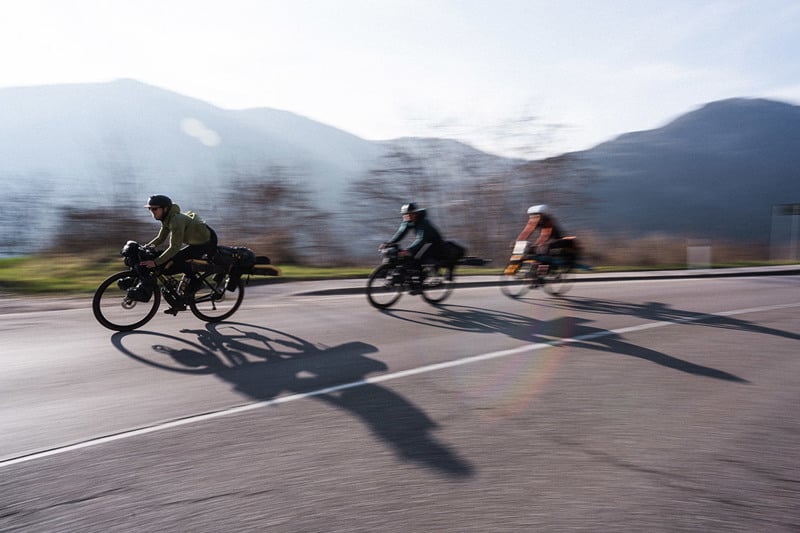
7 adventure films to watch during the holidays
Race to the Summit
Two years ago, Dani Arnold completed the biggest project of his life: climbing the six large Alpine north faces – alone and in record time. The project occupied, accompanied and shaped him over a period of 10 years. Now the Netflix is devoting a 90-minute report to three of these climbs.
Race to the Summit features the dizzying feats of Dani Arnold and the late Ueli Steck, two great Swiss alpinists and long-time Suunto ambassadors. Experienced mountaineers need a day or more to climb the infamous north faces of the Eiger or Matterhorn. But Dani and Ueli climbed them alone in less than three hours. The duel thrilled the climbing world and electrified the media.
Watch the trailer above and the full film on Netflix.
Lost Then Found
TDS winning athlete Christian Meier shares his inspiring story in Lost Then Found. Christian started his athletic career as a cyclist and has since made a transition from the pro peloton to the top of ultra-running.
”Life is a constant evolution of who you are as a person and Lost Then Found marks an important turning point in my life not only as an athlete but as an individual. From losing cycling to finding trail running this is a story of self-discovery and I am happy to be able to share that journey,” says Christian.
Arctic Lines – Sunny Car Center
In the Arctic Lines video series, backcountry snowboarder Antti Autti explores the vast wilderness of northern Finland, Sweden, and Norway. The series is now in its third season, and in the latest episode, 'Sunny Car Center,' Antti seeks—and finds—a new special zone in Northern Norway.
”Exploring expands your horizons and finding new locations is one of the most important aspects of freeriding,” says Antti.
Balkan Express
Ski mountaineers Jochen Mesle and Max Kroneck rode 2500 km from Greece to Germany – and stopped to ski along the way. Balkan Express, their film about the adventure, has won acclaim at international film festivals.
“We really wanted to experience some mountains, cultures, people we didn't know. We looked at a map of Europe and saw that the Balkans are pretty interesting. The sport side wasn’t the main focus of the project. It was about getting to know the culture and people,” says Max.
Nomadland – Bikepacking in Mongolia
Alba Xandri and Erreka Calmet found beautiful landscapes, friendly people and an epic adventure while bikepacking in in the Mongolian grasslands – and made a film about it.
”Mongolia far exceeded our expectations. It is a backcountry bikepacker’s paradise,” says Alba.
Ride to Ski – Bikepacking adventure through the Dolomites
Lack of snow forced Henna Palosaari to think outside the box and led her to invite two of her friends, Sami Sauri and Malva Björkman, on a bike & ski adventure. The 9-day journey that combined two of her favorite sports, turned out to be a beautiful mix of sweat, laughs, ice, snow, and friendship.
”It wasn’t a pure sufferfest,” Henna laughs.
Max Ammer, Raja Ampat and the richest reefs in the world
This is an oldie but goldie: Max Ammer, founder of Papua Diving and two Eco Resorts, Sorido Bay and Kri Eco Resort, shows us why these incredible projects are more than just places to stay, dive and enjoy the unique ecosystems.
Over the past 30 years, a remarkable conservation project has unfolded. The local team, with unwavering dedication, has prioritized the protection of the flourishing ecosystem. This strategic focus has proven to be wise, as the tangible outcomes of their hard work, long-term planning, and precise execution are evident in the thriving fish and coral counts. This stands as a rare case where the reefs are experiencing unprecedented richness – and gives hope for other areas as well.
Lead image by Richard Bucher / Ride to Ski

View your muscle oxygen levels on your Suunto
Keep an eye on what's happening inside your muscles with a Train.red muscle oxygen sensor and your Suunto watch.
Exercise technology is developing fast and new ways to measure and understand what is going on in our bodies emerge frequently. SuuntoPlus gives sensor companies an agile way to integrate with Suunto watches for real-time monitoring and data collection. The latest addition to compatible devices is Train.Red muscle oxygen sensor.
Muscle oxygen sensors are tiny devices that monitor the level of oxygen saturation in the muscles. The concentration of oxygenated and deoxygenated hemoglobin in muscle tissue is commonly measured using near-infrared spectroscopy (NIRS) devices. These sensors provide valuable data by detecting the saturation of oxygen in the muscle, which can assist athletes in maximizing their performance and recovery.
How Muscle Oxygen Sensors Work
Muscle oxygen sensors work by emitting light into the muscle tissue and measuring the amount of light that is absorbed and scattered by the hemoglobin in the muscle. This allows the sensor to determine the concentration of oxygenated and deoxygenated hemoglobin in the muscle tissue, which can be used to calculate the oxygen saturation level.
When using SuuntoPlus Train.red sport app your TrainRed muscle oxygen sensor will provide real-time feedback on the oxygenation status of muscles.
The Advantages of Muscle Oxygen Sensors in sports
Performance Evaluation
One of the key advantages of sports muscle oxygen sensors is that they provide vital data on an athlete's performance. Athletes can receive insight into how their bodies are doing and how they can enhance their performance by monitoring the saturation of oxygen in the muscles during exercise.
Improving Endurance
Muscle oxygen sensors can also be used to improve endurance. By monitoring the oxygen saturation levels in the muscles during exercise, athletes can determine when their muscles are becoming fatigued and adjust their training accordingly. This can help athletes train more efficiently and effectively, leading to greater gains in endurance and overall performance.
Avoiding Injury
Muscle oxygen sensors can potentially be utilized to aid in injury prevention. Athletes can tell whether their muscles are exhausted and at risk of injury by monitoring the oxygen saturation levels in their muscles. This enables them to modify their training to avoid injury and retain optimal performance.
Personalized Training
Muscle oxygen sensors can also be used to create personalized training plans. By analyzing the data provided by the sensors, athletes and coaches can identify areas of weakness and develop training plans that are tailored to their specific needs. This can lead to more efficient training and greater gains in performance.
Monitoring the Recovery Process
Finally, muscle oxygen sensors can be employed to track recovery progress. Athletes can evaluate how quickly their muscles recover by measuring the oxygen saturation levels in their muscles after exercise and adjusting their training accordingly. This can aid in the prevention of overtraining and injury, resulting in more consistent performance over time.
How to use Train.red with Suunto
When using SuuntoPlus Train.red sport app your TrainRed muscle oxygen (SmO2%) sensor will provide real-time feedback on the oxygenation status of muscles, helping you optimize your training and performance.
Go to Suunto app’s App Store and save Train.red sport app in your sport apps.
Go to “My SuuntoPlus sport apps” and “install” the Train.red sport app.
Sync your watch with the app
Before starting an activity, go down to the exercise settings and select Train.red sport app.
During activity your Train.red data will be shown on a specific Train.red screen.
After the activity your muscle oxygen data is saved and synced to Suunto app for post-exercise analysis.
